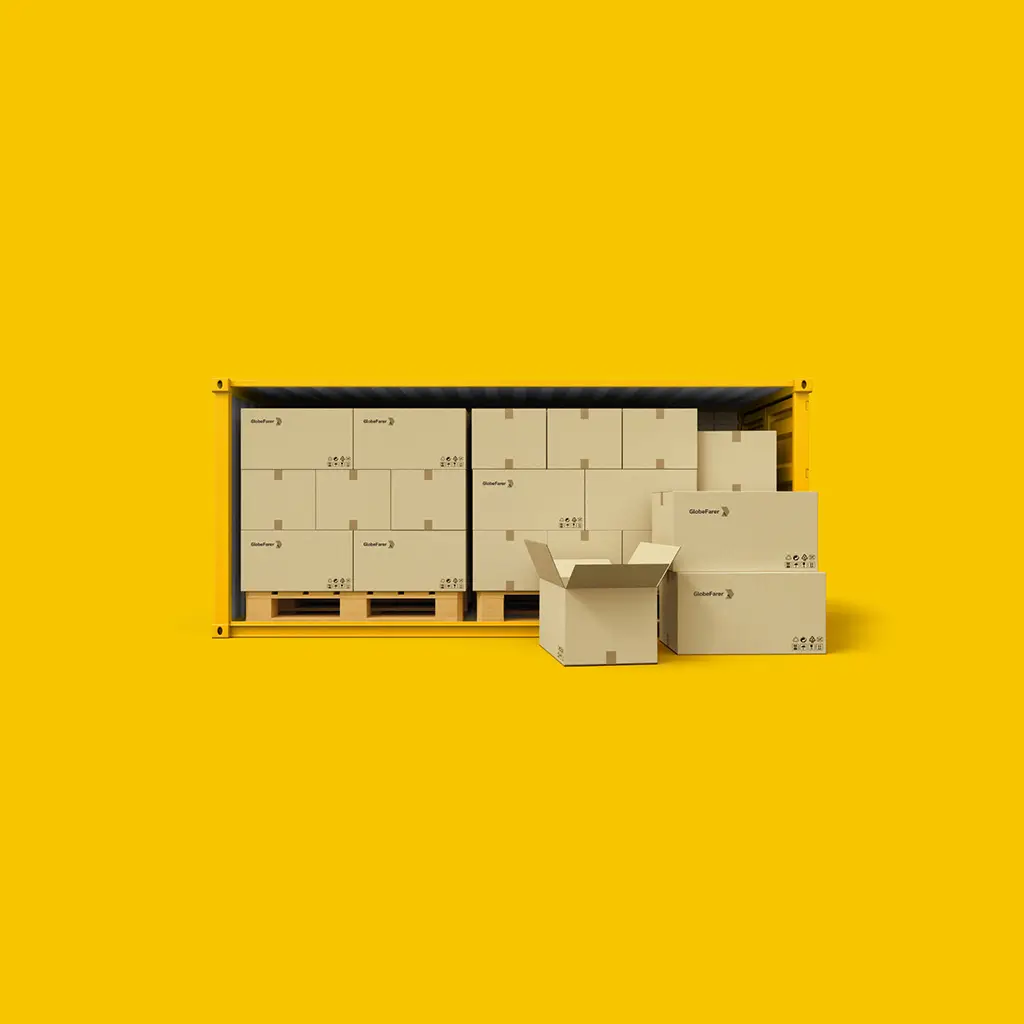Shipping to Australia from UAE
Shipping to Australia can be a seamless process when approached with the right knowledge and preparation. Whether you’re a business owner looking to expand your market or an individual sending personal items, understanding the nuances of shipping can save you time, money, and stress. This guide covers everything you need to know about shipping to Australia, including regulations, documentation, costs, and best practices.
Understanding Australian Shipping Regulations
Customs Regulations and Duties
Australia has stringent customs regulations that apply to all imports. It’s crucial to familiarize yourself with these rules to avoid delays and additional costs. Here are key points to consider:
- Customs Declaration: All goods entering Australia must be declared to the Australian Border Force (ABF). Accurate and complete information about the items being shipped is essential.
- Duties and Taxes: Goods and Services Tax (GST) and potential customs duties apply to imported items. The GST rate is typically 10%, and duties depend on the classification of the goods.
- Prohibited and Restricted Items: Some items are prohibited or restricted from entry into Australia, such as certain agricultural products, weapons, and pharmaceuticals. Check the Australian Government’s Department of Home Affairs for the most up-to-date list.
Shipping Documentation
Proper documentation is crucial for smooth shipping operations. Ensure you have the following documents ready:
- Bill of Lading (BOL): A document issued by the shipping company acknowledging receipt of goods for shipment.
- Commercial Invoice: A detailed list of the goods being shipped, including their value and description.
- Packing List: A comprehensive list detailing the contents of each package.
- Certificate of Origin: Sometimes required to verify the origin of the goods.
Shipping Costs and Delivery Times
Shipping costs to Australia can vary based on several factors:
- Shipping Method: Choose between air freight, sea freight, or express courier services. Air freight is faster but more expensive, while sea freight is cost-effective for large shipments but takes longer.
- Destination: Shipping costs can differ depending on the specific destination within Australia.
- Weight and Volume: Heavier and larger shipments will incur higher costs.
Delivery times also vary based on the shipping method:
- Air Freight: Typically 5-7 business days.
- Sea Freight: Usually 4-6 weeks.
- Express Courier: Can be as quick as 3-5 business days.
Packaging and Handling Tips
Proper packaging ensures that your goods arrive in good condition. Follow these tips:
- Use Sturdy Materials: Ensure boxes and containers are durable and can withstand the rigors of shipping.
- Label Clearly: Labels should be clear and include handling instructions such as “Fragile” or “Keep Dry.”
- Seal Securely: Use high-quality tape and secure all openings to prevent damage.
Choosing a Shipping Provider
Selecting the right shipping provider can make a significant difference. Consider these factors:
- Experience and Reliability: Choose a provider with a proven track record and positive customer reviews.
- Customer Service: Ensure they offer responsive and helpful customer service.
- Tracking Options: Reliable providers offer shipment tracking to monitor the status of your goods.
Reliable Shipping to Australia: Your Partner in Moving and Cargo Services to Australia
Cargo to Australia: Essential Cargo Insights
Cargo shipping to Australia involves transporting large quantities of goods, often for commercial purposes. Whether you’re moving machinery, raw materials, or bulk products, understanding the intricacies of cargo shipping can optimize your supply chain and enhance operational efficiency. This guide will cover key aspects of cargo shipping, including regulations, logistics, and best practices.
Cargo Regulations and Compliance
Import Regulations
Similar to general shipping, cargo shipments must comply with Australian import regulations:
- Import Permits: Certain goods require an import permit. Verify whether your cargo falls into this category and obtain the necessary permits.
- Quarantine Requirements: Australia has strict quarantine laws to protect its environment and agriculture. Ensure your cargo meets biosecurity requirements to prevent delays.
- Safety Standards: Compliance with Australian safety standards and regulations is mandatory, particularly for machinery and electronics.
Documentation and Customs Clearance
Efficient customs clearance is crucial for cargo shipments:
- Import Declaration: Submit an import declaration detailing the nature, quantity, and value of the cargo.
- Manifest: A comprehensive manifest is required for customs inspection, listing all items in the shipment.
- Certificate of Compliance: Certain goods, like electronics, may require a certificate demonstrating compliance with Australian standards.
Cargo Shipping Methods
Choosing the right shipping method depends on the nature of the cargo and your requirements:
- Sea Freight: Ideal for large volumes and heavy cargo. Options include Full Container Load (FCL) and Less than Container Load (LCL).
- Air Freight: Suitable for high-value or time-sensitive cargo. It is faster but more expensive than sea freight.
- Rail and Road Transport: Often used for domestic transport within Australia after sea or air arrival.
Handling and Storage
Proper handling and storage are essential to maintaining cargo quality:
- Warehousing: Choose warehouses that offer secure and climate-controlled environments, especially for sensitive goods.
- Handling Equipment: Use appropriate handling equipment to prevent damage during loading and unloading.
- Inventory Management: Implement effective inventory management systems to track cargo and avoid losses.
Working with Freight Forwarders
Freight forwarders can simplify the cargo shipping process:
- Services Offered: Freight forwarders manage logistics, customs clearance, and transportation. They can handle complex shipments and provide valuable expertise.
- Choosing a Freight Forwarder: Look for experience, reputation, and a strong network of carriers and agents.
Moving to Australia: A Complete Relocation Guide
Moving to Australia is an exciting journey, whether you’re relocating for work, study, or personal reasons. To ensure a smooth transition, it’s important to understand the moving process, from planning and packing to settling into your new home. This guide provides a detailed overview of moving to Australia, covering key considerations and practical steps.
Planning Your Move
Research and Preparation
Effective planning sets the foundation for a successful move:
- Research Locations: Investigate different regions in Australia to find the best fit for your lifestyle and needs.
- Budgeting: Create a comprehensive budget that includes moving expenses, initial costs in Australia, and any unforeseen costs.
- Visa Requirements: Ensure you have the appropriate visa for your move. Consult with immigration experts if needed.
Hiring a Moving Company
Selecting a reliable moving company is crucial:
- Get Multiple Quotes: Obtain quotes from several moving companies to compare services and costs.
- Check References: Verify the international moving company’s reputation through reviews and references.
- Insurance: Ensure that your belongings are insured during the move to protect against loss or damage.
Packing and Shipping Your Belongings
Packing Tips
Proper packing is essential to protect your belongings:
- Label Boxes: Clearly label each box with its contents and the room it’s destined for.
- Use Packing Materials: Use bubble wrap, packing peanuts, and sturdy boxes to protect fragile items.
- Create an Inventory: Maintain an inventory list of all items being shipped to track and organize your belongings.
Shipping Your Belongings
Choose the appropriate shipping method based on your needs:
- Sea Freight: Cost-effective for large volumes and long-distance moves. Expect longer delivery times.
- Air Freight: Faster but more expensive. Suitable for essential items you need immediately.
Settling into Australia
Finding Accommodation
Upon arrival, securing accommodation is a priority:
- Temporary Housing: Consider temporary housing options while searching for a permanent place.
- Long-Term Rental: Explore rental properties through online platforms or local real estate agents.
Understanding Local Services
Familiarize yourself with local services and utilities:
- Utilities: Set up essential services like electricity, water, and internet.
- Healthcare: Register with a local GP and understand the healthcare system in Australia.
Cultural Adaptation
Adjusting to a new culture can take time:
- Learn About Local Customs: Understanding Australian culture and customs can help you settle in more comfortably.
- Connect with the Community: Join local groups or social clubs to build a network and integrate into your new environment.

Wrapping Up
BrightLink Shipping and Logistics is committed to delivering exceptional shipping services tailored to your unique requirements. Whether you are relocating, shipping cargo, or transporting goods to and from the Australia, trust us for safe, reliable, and timely delivery. Contact us today to explore our comprehensive range of freight forwarding services and discover how we can assist you with your shipping needs.
Moving, shipping, and cargo operations to Australia require careful planning and execution. By understanding regulations, choosing the right services, and preparing thoroughly, you can ensure a smooth and successful experience. At BrightLink Shipping and Logistics, we are committed to providing expert guidance and support for all your shipping, cargo, and relocation needs. Contact us today to make your transition to Australia as seamless as possible.

Air Freight
Unlock global possibilities with our all-encompassing air freight services. Seamlessly connecting you to any destination, anytime, ensuring swift air cargo deliveries.

Sea Freight
Navigate the seas of global trade confidently with our ocean freight services. Reliable, efficient, and cost-effective sea freight solutions for seamless maritime shipping.

Land Freight
Empower your supply chain with our land freight services. Efficient, reliable, and cost-effective land cargo transport solutions for seamless ground transportation.

Rail Freight
Enhance logistics with rail freight. Fast, reliable, sustainable rail transportation for efficient rail cargo delivery. Seamlessly connect your business with our rail freight.

Local Moving
Our efficient local moving service ensures a seamless domestic relocation to your new home or office within the same city or area, with careful handling and timely delivery within the cities and country.

International Moving
Trust our experienced international movers team for your international relocation needs. We handle everything from moving to customs, ensuring a smooth move anywhere in the world.

Self Storage
Explore our secure and convenient self-storage solutions for your belongings, perfect for decluttering, renovating, or simply needing extra space. Enjoy easy access to your items anytime with the peace of mind.

Storage Services
Our storage services provide a diverse range of options for personal and business needs, available from short-term to long-term. Safe, climate-controlled storage facilities ensure your items remain protected.
Experience Reliable Shipping Services Today!
Get started now and receive your personalized shipping quote with just one click!

Logistics Services
Efficient logistics solutions tailored to your needs. From optimized supply chains to reliable global transportation, we ensure smooth delivery worldwide. Elevate your logistics experience with our logistics services.

Freight Forwarding
Enhance your global logistics with our expert freight forwarding services. From documentation to customs clearance, trust us to navigate complexities and ensure efficient freight forwarding and delivery worldwide.

Shipping Services
Efficient shipping solutions tailored to your maritime transport requirements. Rely on our expertise for secure and timely shipping, ensuring your goods are delivered worldwide. Simplify logistics with our shipping services.

Cargo Services
Customized cargo solutions expertly designed for your unique cargo needs. Our dedicated freight forwarding team ensures efficient cargo services and cost-effective strategies for smooth cargo handling and worldwide cargo delivery.

Moving Services
Discover our moving services tailored to your relocation needs. From packing delicate items to transporting furniture, we ensure a stress-free move. Trust our experienced relocation team to handle every detail with care and efficiency.

Warehousing Services
Maximize efficiency with our comprehensive warehousing solutions. From secure storage to efficient distribution, we ensure your goods are handled with precision and care. Explore our warehousing services that elevate your logistics.

Packing Services
Ensure your goods are packed with care and precision with our professional packing services. From delicate handling to secure packaging, we guarantee safe transport and peace of mind. Experience expert packing solutions.

Customs Clearance
Facilitate efficient customs clearance with our expert services. From navigating regulations to ensuring smooth processing, we optimize international shipments for streamlined logistics operations. Trust us for hassle-free customs clearance.



